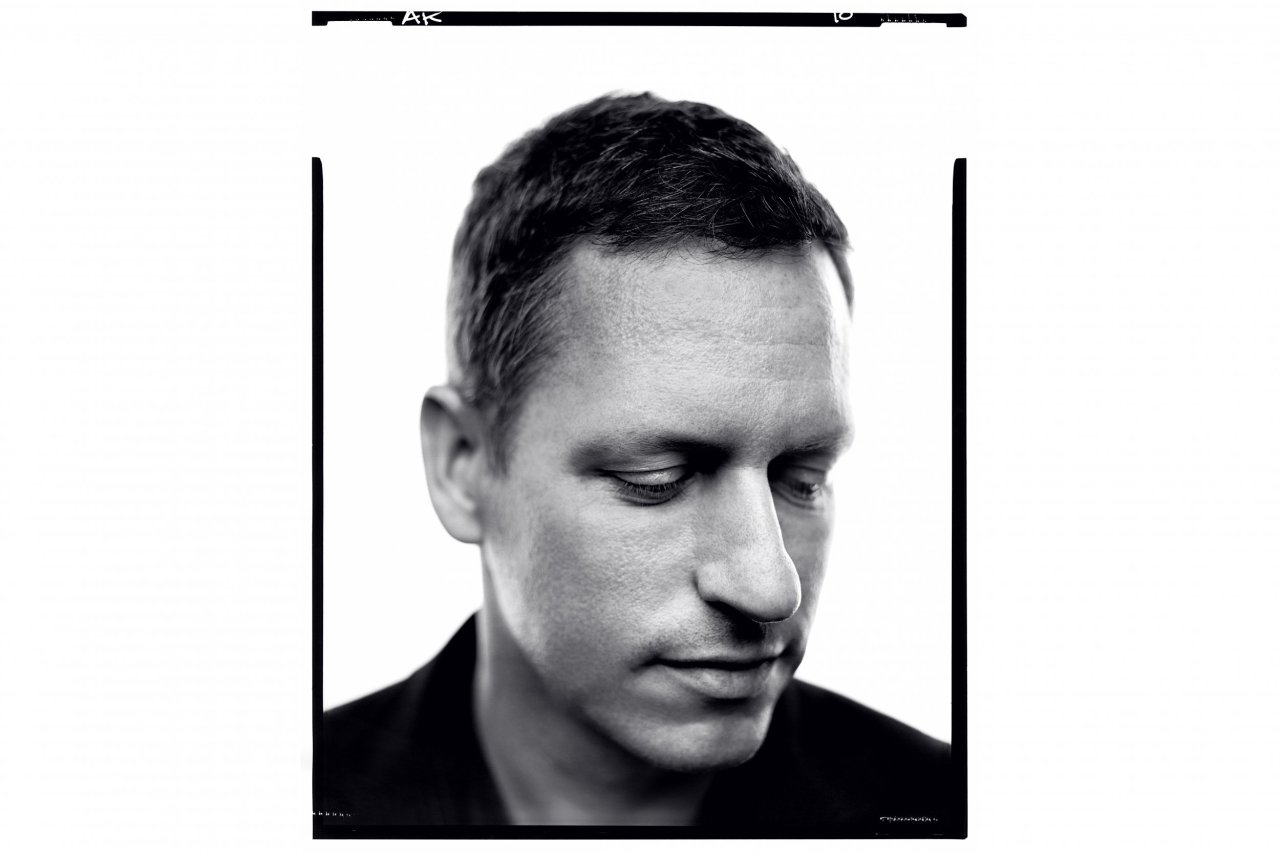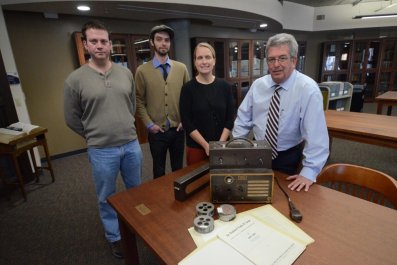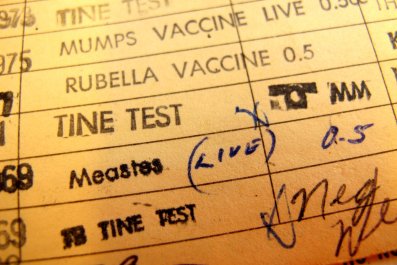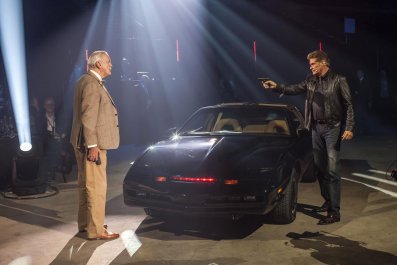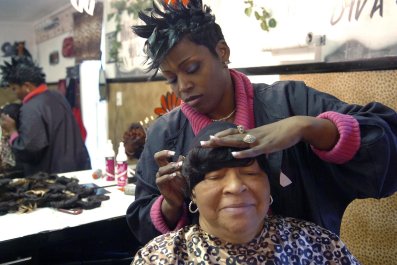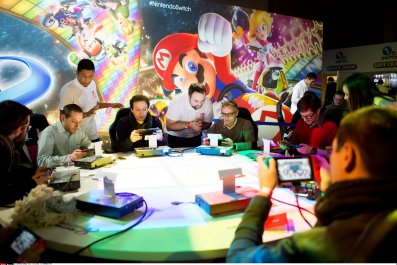"You're dropping out of Yale?"
Paul Gu's parents were angry and confused. Their son, who in 2011 was halfway through a degree in economics and computer science, was on the phone telling them he wanted to pursue something called a Thiel Fellowship. As one of 24 "uniquely talented" teenagers, he'd get $100,000 over two years to start a company he and a classmate had dreamed up. The catch was that he'd have to drop out of college.
Gu's parents had moved from Hebei, China, to Phoenix when he was 6 years old. They'd never heard of Peter Thiel, the libertarian billionaire who'd co-founded PayPal, then made prescient and extraordinarily lucrative investments in Facebook, Spotify, Yelp and other tech high-fliers. As with most Americans, immigrant or otherwise, their version of the American dream included a college education as the foundation of upward mobility. But as Thiel sees it, today's elite universities are overpriced relics holding back innovation and contributing to a technology deficit that will have disastrous economic consequences. He believes gumptious kids like Gu shouldn't spend their late teens and early 20s piling up debt that will push them into gainful but unrewarding jobs. Instead, they should pursue "radical innovation that will benefit society."
Thiel suggested he could do a better job than degree-making institutions by giving bright, ambitious adolescents and young adults the freedom to reach for loftier goals. To catalyze their endeavors, his fellowship would offer a monthly stipend and opportunities for mentorship, business guidance and networking.
By taking aim at America's higher education system, Thiel intended to stir up a storm, and he did. Harvard President Larry Summers says the idea is "the single most misdirected bit of philanthropy in this decade." Higher education needs to change, Summers adds, but using philanthropic dollars to tempt people to drop out of college "is a very dangerous idea."
Thiel says it's Summers and his colleagues who are hawking a mendacious dream. Higher-education costs have increased at twice the rate of inflation, and student debt now tops $1.3 trillion. The rise in debt has coincided with a decline in business startups by adults under 35—creating what a recent study by the Kauffman Foundation calls "a lost generation" of entrepreneurs.
Thiel, who predicted the bursting of the tech and housing bubbles, believes the education debt bubble will be the next to explode. "There's been an incredible escalation in price without corresponding improvements in the product, and yet people still believe that college is just something that you have to do. Whenever something is overvalued and intensely believed, that's a sign of a bubble."
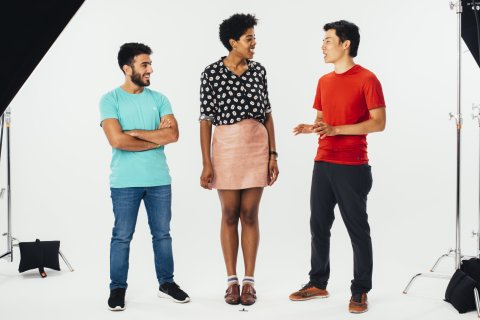
'If Things Went Horribly Wrong… '
Part of what's rankling educators like Summers is that Thiel's grievances resonate with some of their brightest students. Fellowship officials say that about three-quarters of the 6,000 applications they received last year were submitted by students at top-tier schools like Yale, Harvard, MIT and Stanford. These are kids who have followed competitive but tightly scripted paths that lead to the difficult but somewhat mundane goal of acceptance to a top college—followed by a career that's more likely to be remunerative than meaningful. (Finance and consulting, which claim about a third of Ivy League graduates, are examples Thiel likes to cite with scorn.)
A creative and entrepreneurial subclass of these students arrives on campus only to realize that the institution they've worked so hard to get into lacks the flexibility these restless brains crave. Like Paul Gu, Eden Full Goh heard about the Thiel Fellowship in early 2011, when she was a sophomore at Princeton. A varsity rower and budding electrical engineer, Full Goh radiates an energetic self-assuredness much larger than her 4-foot 11-inch frame. At 10 years old, she built her first solar car, then she began working on an invention that uses gravity-fed water and calibrated bimetallic coils to allow solar panels to track the sun—boosting output by 40 percent and, as a bonus, spitting out clean drinking water. After graduating from her Calgary, Alberta, high school at 16, she set off for rural Kenya to tweak the prototype.
She envisioned the SunSaluter as a sustainable energy source for millions in the developing world. But at Princeton, she says, her education was getting in the way. "I had to fit into a rigid system that wasn't created for people like me. The required courses were slowing me down. I wanted to learn what I needed to develop my ideas and get them out there."
In March 2011, Full Goh, Gu and 78 other finalists traveled to San Francisco to present their ideas to fellowship judges, many of whom were Thiel's friends from the tech and venture capital worlds. About half the winning pitches were ambitious science and engineering projects: John Burnham had a proposal to extract minerals from passing asteroids; Laura Deming was set on eliminating age-related disease, one of Thiel's pet interests. "It's theoretically possible," said Deming, who'd entered MIT's biology program at 14, "for humans to live for hundreds of years."
Others seemed more inspired by tech innovators like Bill Gates or Mark Zuckerberg, both of whom left Harvard without a degree. The founders of Dell, Uber, Oracle and many other tech high-fliers all dropped out of college early, as did Apple founder Steve Jobs. Jobs became convinced, in his freshman year, that his degree-path courses at Reed College weren't worth what his working-class parents were paying. Once he dropped out, he began "dropping in on the ones that looked far more interesting." Among them was a calligraphy class that would inspire the Macintosh computer's emphasis on typography—one of Apple's signature strengths.
Gu, who had an idea for a local-commerce website, decided to accept the fellowship over his parents' objections—even though he agreed with them that his chances for entrepreneurial success were low. "They thought I was crazy to walk away from an Ivy League diploma," says Gu, now 26. "But the safe track I was on didn't have much room for growth. I wanted to take on bigger challenges."
Gu's soft-spoken Yale classmate and business partner, Daniel Friedman, hesitated to sign on. "Professionally, I'd gain experience, and if things went horribly wrong I could go back. The real costs were social: I'd be leaving my close friends," says Friedman, who eventually accepted the fellowship.
Unlike most of the other finalists, Nick Cammarata was an ambivalent student. "I had a 2.2 [grade point average] in high school, and I missed 60 school days my senior year," he says. But Cammarata was ambitious about his projects and precociously self-sufficient. At age 9, he insisted he start paying his parents his share of the household utilities. At 10, he was spending up to 80 hours a week experimenting with algorithmic programming. By 16, he'd started a Dropbox competitor that attracted 83 million users in 11 months.
Those accomplishments prompted the head of Carnegie Mellon University's School of Computer Science to override its admissions requirements and enroll him. But at a sleepover weekend for incoming freshmen, Cammarata became disenchanted by his classmates' lack of direction and decided to pursue the Thiel Fellowship instead.
"I wasn't sure what this guy Thiel was up to," says Cammarata, who had an idea for an app that would enable teachers to create and share interactive lessons on tablets. "Was it some kind of experiment? Whatever it was, it seemed a whole lot more interesting than going to college."

Force Change
Peter Thiel has been trying to rewire the world to his liking since he arrived in Silicon Valley as a Stanford University freshman in 1985. PayPal, which he co-founded in 1998, was never intended to be merely a handy replacement for checks and money orders. Its founding vision, as he wrote in the libertarian journal Cato Unbound, was to create "a new world currency, free from all government control and dilution—the end of monetary sovereignty."
After selling the company to eBay for $1.5 billion in 2002, Thiel began shopping for other dot-coms that could "force change on the existing social and political order" and create "a new world." In 2004, he was the first outsider to bet on Facebook, with a $500,000 angel investment that would earn him a reported $400 million. He saw social media's utility in libertarian terms, as "a means to create the space for new modes of dissent and new ways to form communities not bounded by historical nation-states."
More recently, Thiel has irked Silicon Valley with his support of Donald Trump and rankled journalists with his behind-the-scenes funding of an invasion-of-privacy lawsuit by Terry Bollea, better known as Hulk Hogan. The $140 million judgment bankrupted Gawker Media, publisher of a tech blog that had nine years earlier outed Thiel as gay.
Though vengeance was clearly the motivation with the Gawker lawsuit, Thiel often seems to be driven by what PayPal co-founder Max Levchin calls "the sheer contrariness of what he is doing." One of his signature questions for fellows and job candidates is: "Tell us something about the world that you think is true that most people think is not true."
Thiel also believes that society and its most influential subsets could do better—and that he can be a force for positive change. The manifesto of his Founders Fund—"We wanted flying cars, but we got 140 characters"—expresses the venture capitalist's frustration with the shallowness of Silicon Valley's ambitions.
Thiel's jabs at higher education are attacks on a much more vaunted American institution. At one point, he considered starting his own university, according to Michael Gibson, who, along with Danielle Strachman, was hired to oversee the fellowship program. Thiel dropped the idea because, Gibson says, "it seemed too complicated and too much like surrendering to the system."
Thiel wanted his fellowship to be flexible, with no constraints on where or how fellows spend their time. Gu, Cammarata, Full Goh and several other fellows headed to the San Francisco Bay Area within a few months, joining the quickening stream of young talent arriving to take a shot at startup stardom.
According to a Harvard Business Review study, the average New York City tech founder is a college grad who first spends nearly a decade working for an established company. But the Bay Area increasingly attracts young people who see little reason to get a degree before founding a company (or going to work for Google or the other tech giants that no longer require diplomas). That hacker mindset—that the world is malleable and ripe for innovation—coupled with the area's ever-deepening wells of capital has created something of a post-credential economy in Northern California.
The Thiel fellows were ostensibly better-equipped than many of the arrivistes, with their $4,000 monthly stipends and their benefactor's name behind them. But other support was at first scant. It was up to the fellows to find work space and seek out mentors, to set goals and figure out how to achieve them. Apart from quarterly check-ins, the teenagers had absolute freedom to build their own structure.
"The problem is that that works for only a very small subset of the population at that age," says first-year fellow Dale Stephens, who applied for the fellowship with what he now calls "a very bad idea for an airline."
"It was hard for a lot of us to adapt," says Full Goh, "going from an environment where someone tells you what to do every moment to one where you can do whatever you want. I spent a lot of days wasting time on email."
Gu, who had amicably parted with Friedman, had a surfeit of enthusiasm but only a rough sense of what his product and company would look like. "I was pitching ideas around, having lunch with lots of smart people. It was exciting at first, but we were losing focus. I was frustrated. I started to wonder why I'd dropped out."
Away from their circles of family and friends and expected to build companies from scratch, several first- and second-year fellows reported problems with depression. "I was living in the cheapest place I could find in Silicon Valley, coding all day and most of the night," says Cammarata, who had teamed up with fellows David Merfield and John Marbach to develop the lesson-sharing app, which they named Tablo. "I'd thought I'd come out and be mentored by Zuck and [Elon] Musk," Cammarata says with a smile, "but there were no classes and no meaningful mentorships. We had no idea how to build a business. I realized it wasn't what I wanted; I wanted to be in college, to party and make friends."
Marbach, who'd left Wake Forest University, quickly realized that Silicon Valley has few social spaces for nondrinking minors. "I could get access to any CEO or VC, which was great, but I couldn't find anyone to hang out with." Marbach decided to leave the fellowship and return to Wake Forest. Fellow David Luan went back to Yale.
"I knew growing a business would take time," says Friedman, who had shifted to an online-education venture. "But after 18 months, my friends were getting close to graduation—this big goal—and they'd ask me what was going on with my company. It started to get embarrassing."
By late 2012, with a second class of fellows coming in, Thiel had disciples but no radical innovation.
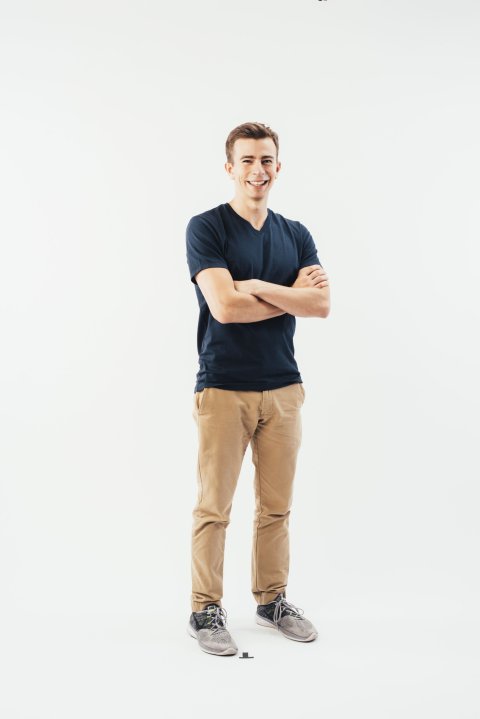
'Something Has Gone Wrong'
Even academics recognize that the American university is overdue for an overhaul. In their book Academically Adrift, Richard Arum and Josipa Roksa found that 45 percent of undergraduates at 24 institutions showed no significant improvement in a range of skills—including critical thinking, complex reasoning and writing—during their first two years at college. The authors attributed the poor performance to the distractions of socializing or working and a collegiate culture that doesn't prioritize undergraduate learning.
But there are some things colleges do better than any other institution. A campus provides a structured, semi-guided transition into adulthood and opens up diverse worlds of people and ideas. A motivated student can learn how to write eloquently or apply quantitative skills to scientific discovery. And a university is a great place to test one's interests and meet lifelong friends, mentors and romantic partners.
Thiel's degrees—a B.A. and a J.D. from Stanford—would seem to have served him well. But the investor, who is now worth about $2.7 billion, says he was "guilty" of not carefully considering his education. "I didn't know what else to do, and I didn't want to take responsibility for really thinking about my future."
In the 30 years since Thiel was a freshman, college has become a much more expensive place to find oneself. "For some people, it's still worth it," he says. "But a lot of graduates can't get good jobs; they're saddled with debt and moving back home with their parents. People are starting to see that something has gone wrong."
Skipping college to try to build the next Uber or Airbnb might seem a seductive option, but for every Zuckerberg or Jobs there are thousands of college quitters whose big ideas sputter. America's 30 million college dropouts are much more likely than graduates to be unemployed and living in poverty. Though the return on a higher-education investment may be declining, adults without degrees earn, on average, only $23,900 per year—less than half the average of college graduates.
"What's missing from the fellowship narrative," says second-year Thiel fellow Dylan Field, who left Brown University after his junior year, "is that college is very useful for a lot of people. I actually loved it. But I wanted to build a business, and the fellowship was a way to accelerate that."
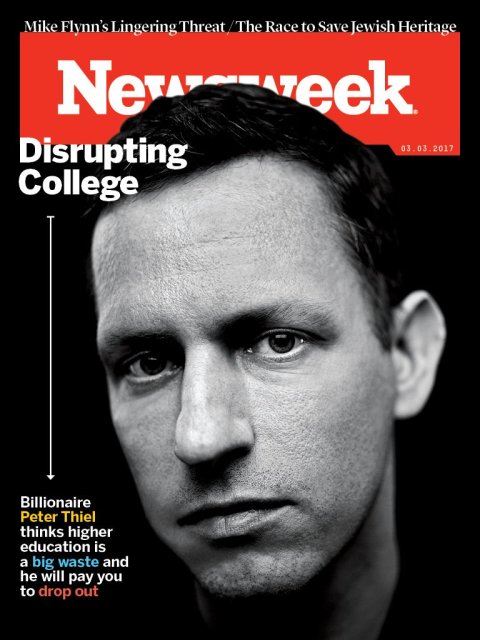
A former child actor who grew up in California's Sonoma County, Field attended a technology-focused high school—"The robotics team was like the football team," he says—and had college internships at LinkedIn and O'Reilly Media. During a summer stint at Flipbook, he came up with an audacious plan to take on software giant Adobe by building a better and cheaper suite of creative tools for designers.
As Field and other second-year fellows moved to the Bay Area, bonds began to build. Cammarata, Deming and others rented a big house in Palo Alto. Starting with five people, the group grew to eight or nine housemates. "We had a 6-foot-4 guy living in a closet at one point," Cammarata says. "That was my pseudo-dorm experience, complete with the soul-searching 2 a.m. conversations. Things started to get fun at that point."
The program began adding structure to fill some of the college-like gaps. Incoming fellows got help finding group housing in San Francisco and Silicon Valley, and the fellowship started sponsoring more seminars, dinners and mixers where fellows could mingle with one another and with tech-industry titans and angel investors. They also brought in a psychologist to help those who were struggling emotionally. "We underestimated how important community would be for the fellows," Thiel says. "That was our biggest mistake the first year."
To Field, the social component was as important as the money. "Entrepreneurship can be a very solitary act. To have good people going through that with you is wonderful."
Thiel hosted some events at his house; other hosts included angel investor Kevin Hartz (Airbnb, Pinterest, Uber) and Roger Dicky, a serial entrepreneur whose startups include the Mafia Wars game and software developer Gigster. "We'd be up on a rooftop of a mansion on a mountain, hobnobbing with the billionaires who built Silicon Valley," Cammarata says, "and these guys seemed so thrilled to be interacting with people so young. They all wanted to help, to get involved."
At one party, Cammarata remembers, he met "a guy named Gene."
"He asked what I was doing, and I said, 'I'm selling a company. You should buy it.'" He did.
Tablo was the first company founded during the fellowship to be sold. Momentum was building for other fellows too. Field quickly raised $4 million for his company, Figma. Gu, who had abandoned his original idea, crossed paths with two Google Enterprise executives looking for their next project. The three teamed up and raised a $1.75 million seed round for a lending platform on which investors back young up-and-comers—a "Kickstarter for people," as Gu put it.
That idea eventually morphed into Upstart, which loans money using innovative algorithms Gu developed to evaluate earning potential and other factors, rather than traditional credit scores. Gu would eventually locate what he says is "a very meaningful portion of our investors" through fellowship networks.
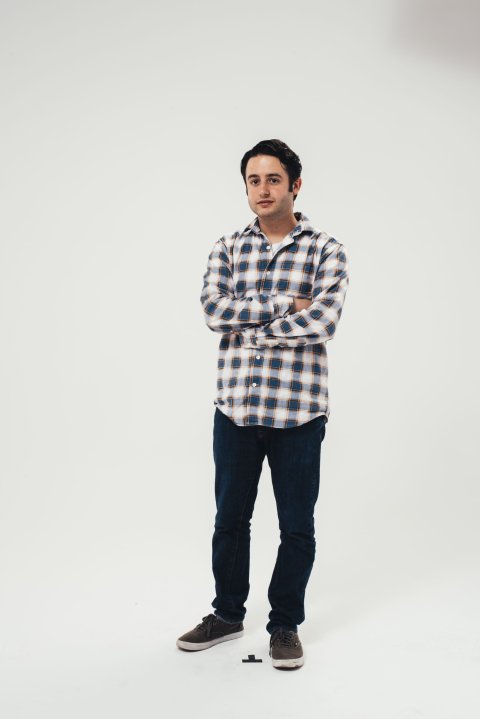
'The Core Lie Universities Tell'
By imitating aspects of the college experience, the fellowship has begun to look a little more like the institutions its founder railed against. There are signs the influence has flowed in the opposite direction as well. Over the past six years, universities that have lost students to the Thiel Fellowship or Y-Combinator (an early-stage tech incubator in which Thiel is a partner) have introduced an array of options to support students' entrepreneurial passions while keeping them on campus.
Harvard's Innovation Lab (i-lab) serves as a financing and mentoring resource for students who are pursuing innovative startups, and the Yale Entrepreneurial Institute's Innovation Fund offers up to $100,000 to fledgling companies. David Luan, who left the Thiel Fellowship after one year, turned to Yale's fund to help finance his visual-analysis software company, Dextro. Wharton, Columbia, Northwestern and several state universities have also started incubator and accelerator programs.
To Thiel, these moves don't get at what he sees as higher education's underlying problems: the still-rising costs, the questionable value, the exclusivity. "The elite universities do some good things," he says, "but the core lie they tell is that their version of an education is an inherently positive thing that everyone has access to.
"The reality," says Thiel, "is they're running a Studio 54 nightclub with a long line outside and a few people inside dancing. If Harvard wanted more of the world to benefit, they could open it up, franchise it to reach more people. Of course, any Harvard president who suggested that would find an alumni lynch mob at his door. Their sense of identity comes from exclusion."
And yet, Thiel doubts he will expand his program beyond the current limit of 30 new fellows per year. "We have to be careful for it not to become just another monolithic credentialing system. With a small group, we're able to work with them individually and create specific opportunities and make meaningful connections to people they need to meet."
Thiel's attempt to rescue high-potential kids from "conformist, degree-making institutions" has transformed into a club that is, arguably, far more exclusive than any of the schools the fellows abandoned.
The Thiel pedigree almost guarantees that investors will at least listen to fellows' pitches—and very often, they respond favorably. By the third year, Gu's Upstart had raised a $6 million series A round and had 10 employees. Dylan Field brought in another $14 million and expanded his Figma team to 14 designers, engineers and marketing people. With the release of a beta version, the design community began to buzz about Figma's real-time collaborative editing capabilities, a feature that gave it a leg up on Adobe. Full Goh, who'd decided to incorporate SunSaluter as a nonprofit, pulled in $500,000 in grants and racked up a million air miles as she set up distribution and manufacturing bases in Africa and India.
Other fellows who became adept at raising money struggled at running a business. Stanford dropout Tom Currier's company, which managed urban co-living properties, collapsed after two years, forcing evictions. Andrew Hsu—who at 19 had been a fourth-year Ph.D. candidate in neuroscience at Stanford—raised $1.5 million from heavy hitters like Google Ventures for his educational gaming startup, Airy Labs, which laid off most of its 20 employees in 2012 amid accusations that the company was a "sweatshop" that was actually run by Hsu's parents.
Fellows now must keep the program's staff updated on revenue, expenses and cash flow. "We want to know so we can help them if they need to step on the gas and grow faster, or if they've only got six months' cash left," says Jack Abraham, who came on as executive director when Gibson and Strachman left to start a venture fund to meet the capital needs of fellowship alumni and other "misfit young entrepreneurs." Abraham has also developed a comprehensive mentoring program to help fellows with some of the bigger challenges of growing a company, including fundraising, team building and user acquisition.
By far the biggest change is in the types of projects new fellows are bringing in. Despite Thiel's stated goal of spurring advances in areas like biomedical technology, transportation and energy, each successive class has looked increasingly like the program's creator and Silicon Valley. There are few ambitious hard-science projects—nuclear fusion energy, cancer cures, immunotherapy—that might jump-start the "radical innovation" Thiel envisioned when he founded the program.
Has Thiel lost interest in moving Silicon Valley beyond 140 characters?
"We started with the perspective that we needed more scientific breakthroughs, but in STEM [science, technology, engineering and math] it's harder to start something independently," he says. "It's much easier with software, where yourself and a computer can do it with a readily available amount of financing. Now we think about not just whether an applicant's idea is inspiring and can change the world but also whether it's feasible and has a clear path forward to market."
Some of the early fellows have made impressive, if incremental, strides in the fields of photonics, nanotechnology and medicine, but the biggest hits have been the most pedestrian. Harvard dropout Ben Yu's Sprayable caffeine is tearing up the market, and investors have sunk tens of millions of dollars into Vitalik Buterin's cryptocurrency projects. James Proud raised roughly $40 million for Hello, which makes the Sense sleep tracker, one of several high-tech alarm clocks now hitting the market. In India, Ritesh Agarwal has raised more than $225 million to build an online marketplace for branded budget hotels.
"What that shows," says Bill Aulet, who directs MIT's Global Founders' Skills Accelerator, "is that the Thiel Fellowship is fine if you want to do the next Red Bull or dating app or Uberfication, but maybe not if you want to solve cancer or fundamentally change the world."
The latest crop of fellows looks very different from the first two classes. Most were recruited via Thiel's Bay Area networks rather than selected from the applicant pool. They are older, and many have multiple startup successes under their belts.
And so, the question arises: Why do we need a nonprofit fellowship when we already have venture capitalists willing to bet on not-so-big ideas that could well become big businesses?
Whether intentional or not, one practical result of the fellowship has been its role as a farm team for Thiel Inc. Friedman's company, Thinkful, was the first to get capital from Thiel, through his FF Angel venture capital fund. Since then, Thiel's funds have invested in Gu's Upstart and Thomas Sohmers's REX Computing, which designs energy-efficient chips for supercomputing applications. Thiel money has gone into Clay Allsopp's Propeller, which creates tools for building mobile apps and which was acquired, in 2014, by Palantir Technologies, the secretive data-analysis company co-founded by Thiel.
There are undoubtedly others: When I asked Deming if Thiel or one of his funds had invested in her biotech-focused Longevity Fund or her immunotherapy company, Alexo Therapeutics, she said, "I'm not sure I can say that. But I guess you can guess." Full Goh and other fellows have also taken jobs at Palantir and served as consultants to the Founders Fund.
I asked Thiel, arguably the best talent spotter in Silicon Valley, if the nonprofit program might be considered a means to discover talent and ground-floor investment opportunities.
"We try to be very careful to keep a super-bright line between nonprofit and for-profit," he said. "If there were questions about whether a person who's underwriting a nonprofit somehow profits on the back end, it would open you up to charges of it being somehow self-serving. Our funds don't actually lead the investments, and my investments are very passive, a very small part."
Beyond the impressive numbers—the 138 Thiel fellows have collectively raised some $450 million in investments and created $2.5 billion in equity value, more than most college endowments—Thiel believes the fellowship has succeeded in promoting entrepreneurship as a viable alternative to college. "Nowadays, entrepreneurship is a line you put on your résumé," he says.
But Thiel says the most important gauge of the program's success is whether it has positively affected the lives of the fellows. Of the 22 fellows I spoke with—even those who left the program early—all but one said emphatically that it had. None of them counted their business success as their greatest gain, though. They claimed that they'd learned far more doing real work and solving real problems than they would have if they'd spent the time in college.
Whether Thiel's experiment demonstrates a viable alternative to higher education is debatable. The extra time, money and connections certainly accelerated the success of many of this handpicked group of high-achieving outliers—but one could argue that most would have done very well for themselves, eventually, with or without their billionaire patron.
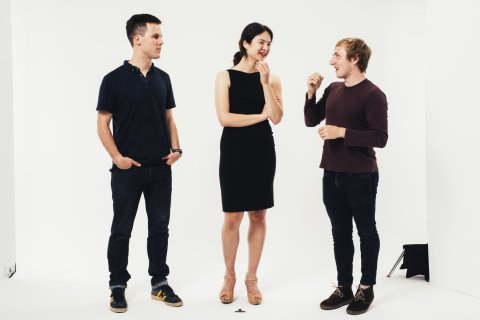
Education's Great Unbundling
Thiel's fellowship hasn't given us flying cars or asteroid mining, but it has provoked a long-overdue discussion about the value of higher education—and that may well be its biggest service to society. "Even if it turns out to be just a $16 million PR campaign to get parents to think more cogently about their investments in their children's futures," says Dale Stephens, "I'd say it's been tremendously successful."
In the six years since the fellowship began, the range of educational alternatives has exploded. With traditional institutions slow to meet the demands of a new generation of students, new players are taking advantage of more accessible technology and changing the way education is conceived and delivered.
Some are narrowly focused on skills acquisition, offering a tech-era update to the vocational school tradition that can serve as either a substitute or a practical complement to a liberal arts education. More than 40 million students have taken online, interactive computer-coding courses from Code Academy (co-founded by a Columbia University dropout) and Udemy. Other booming upstarts, such as General Assembly and Hack Reactor, offer a range of online options and bricks-and-mortar "boot camps" that promise to make a programmer employable in 12 intense weeks for about $15,000.
Among the broader and deeper educational options that are emerging, some of the most interesting have come from Thiel fellows. Friedman's company, Thinkful, personalizes distance learning for information technology professionals by combining online lessons with one-on-one mentorship by experienced coders. Stephens's wildly successful UnCollege offers structured gap-year programs for young people who want to "drive their own education, explore and make a splash in the world."
What separates these new options from traditional learning paradigms is their à la carte nature: Students, rather than administrators, choose what to study. "It's the great unbundling," says Gibson. "Before, universities had it all tied up in one package. Now that there are cheaper and more relevant alternatives for learning, people are breaking out of these super-narrow tracks. You will start to see fewer people willing to play by the old, bureaucratic, arbitrary rules."
Gu, whose online loan platform has raised more than $53 million and employs 100 people, says his parents have finally begun to accept that their son will never get an Ivy League diploma. Of the 43 fellows in the first two classes, Gu is one of 25 who stayed out of college and continued working on their own companies or projects. Six went to work for established tech companies (some through acquisitions). Over the six-year life of the fellowship, only 12 of the 138 fellows have returned to college.
Among those dozen returnees, Full Goh's decision to go back to Princeton was perhaps the most surprising. But Full Goh, whose SunSaluter is now boosting solar electricity output in 18 countries in Asia and Africa, did it on her own terms. "I strategically picked only the classes I wanted to take, to give me the technical fluency I wanted and to minimize my time on campus."
Six months short of graduation, she dropped out again. "Once I learned what I needed, I wanted to put those skills to work," she says. "There was no point jumping through hoops with required classes for half a year just to get a diploma.
"As crazy as this might sound to some people, I came to college to learn. Getting that piece of paper means absolutely nothing to me."



